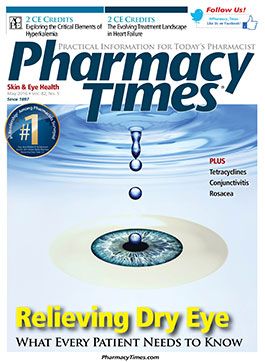Publication
Article
Pharmacy Times
Sunburn: Shedding Light on Lesser Known Factors
Author(s):
From among the multiple rays the sun emits, pharmacists must distinguish between the 2 types of ultraviolet rays when discussing sun protection.

From among the multiple rays the sun emits, pharmacists must distinguish between the 2 types of ultraviolet (UV) rays—UVA and UVB—when discussing sun protection. UVA rays penetrate the dermal layers of the skin, which can damage endothelial cells and capillaries,1 and UVB rays penetrate the epidermal layers.2
Sunburn affects approximately 75% of adolescents and adults in the United States. Individuals exposed to excessive UV light are at greater risk for developing skin cancer; therefore, understanding proper sun protection and health is important.3 Pharmacists can play a pivotal role in counseling patients who are more likely to experience sunburn, including patients with drug-induced photosensitivity.
Photosensitivity
Drugs that induce photosensitivity (Table) can induce either phototoxicity or photoallergy. Drug-induced phototoxicity is known for its rapid onset of pain, prickling or burning sensations, and sunburn-like appearance4; for these reactions to occur, prior exposure to a causative drug is not necessary. Drug-induced photoallergy, although less common, requires exposure to a causative drug (although the reaction is not necessarily dose-dependent). An immune-mediated response manifests as urticaria with dermatitis and eczema. Drug-induced photoallergic reactions are resolved upon drug discontinuation.4
Classification of Burns
Most burns are classified into 3 stages. First-degree burns usually involve the epidermis, appear dry and red, and feel painful and tender. Second-degree burns affect the dermis; appear moist, possibly with oozing blisters; and feel very painful. Third-degree burns affect all layers of the skin, including the subcutaneous layer; appear leather-like and charred; and are frequently painless. For first-degree and second- degree burns, the burn site should be submerged in cool, soapy water. For thirddegree burns, the patient must be taken to an emergency department promptly.5
The Pharmacist’s Role
To manage drug-induced photosensitive reactions, discontinue causative medication(s); if patients must continue, recommend that they take the medication(s) in the evening. When counseling patients on proper sun protection, discuss proper hydration, staying indoors during the peak hours of sunlight (ie, 10 am to 4 pm), and wearing loose, lightcolored clothing that minimizes the sun’s UV rays from penetrating the skin. For patients who smoke, offering smoking cessation counseling may be warranted, since smoking, along with prolonged UV exposure, can lead to skin cancer. When pharmacists recommend sunscreen products, several factors must be considered, such as activity in the sunlight. The sun protection factor (SPF) indicates how effective the sunscreen is at blocking UV rays. Products with an SPF between 30 and 50 are ideal; there are no reports of sunscreen products with an SPF more than 50 being increasingly effective.1,6
Common sunburn sites include the ears, nose, forearms, hands, and cheeks; apply sunscreen generously to these areas. Patients should apply sunscreen 15 minutes before exposure to the sun and reapply it at least every 2 hours, even on cloudy days. Patients should also apply sunscreen after heavy sweating, swimming, and drying off.6
Brian J. Catton, PharmD, graduated from the Bernard J. Dunn School of Pharmacy at Shenandoah University in Winchester, Virginia, in 2010. He received the Distinguished Young Pharmacist Award from the New Jersey Pharmacists Association in 2014 and founded its New Practitioner Network in 2015. He currently is a scientific communications manager at AlphaBioCom in King of Prussia, Pennsylvania. His areas of interest include pediatrics, immunizations, drug-therapy management, social media, patient counseling, and immuno-oncology.
References
- Petersen B, Wulf HC. Application of sunscreen—theory and reality. Photodermatol Photoimmunol Photomed. 2014;30(2-3):96-101. doi: 10.1111/phpp.12099.
- Holick MF. Biological effects of sunlight, ultraviolet radiation, visible light, infrared radiation and vitamin D for health. Anticancer Res. 2016;36(3):1345-1356.
- Mallett KA, Ackerman S, Turrisi R, Robinson JK. Rates of sunburn among dermatology patients. JAMA Dermatol. 2015;151(2):231-232. doi: 10.1001/jamadermatol.2014.3092.
- Drug-induced photosensitivity. Institute for Safe Medication Practices website. ismp.org/newsletters/ambulatory/archives/200704_2.asp. Published April 2007. Accessed March 25, 2016.
- Burn classification. The University of New Mexico website. http://hospitals.unm.edu/burn/classification.shtml. Accessed March 25, 2016.
- Hellwig TR, Gripentrog EM, Templeton KS. Shining the light on sunscreen. US Pharm. 2012;37(4):36-39.







